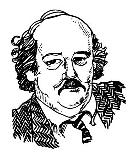(Syndicated to Kansas newspapers Oct. 28, 2013)
 Boy! You go to one of those intellectual conferences outside the Statehouse—this one on the KU campus and they’re talking about the impact on local communities of the state’s tax policies—and your head spins for a couple days.
Boy! You go to one of those intellectual conferences outside the Statehouse—this one on the KU campus and they’re talking about the impact on local communities of the state’s tax policies—and your head spins for a couple days.
The Kansas Economic Policy Conference was one of those, and while in the Statehouse we talk about what Gov. Sam Brownback calls a “shot of adrenalin to the heart” that his income tax cuts have produced, down at the county and city level, things look a lot different.
The trend described by people who actually run cities and counties and school districts is predicted to be less state revenue—which means less in income tax payments to the state, and presumably more money in our pockets when we get done with the state income tax form—but more of that generally hated local property tax.
When you’re trying to repair busted water mains, or pave streets, or feed prisoners in local jails, or educate children with reduced state aid, the whole tax picture shows a drop in state tax revenues—good for gubernatorial campaigns—but higher local property taxes or local sales taxes or more fees for this and that on the constituents of the governor and especially those Kansas House members who want to be reelected.
An example of Statehouse-made tax policy trickling down to your city or county or school district? Remember back when the state decided to spur manufacturing economic development by eliminating the property tax on machinery and equipment at factories and such bought after July 1, 2006? Didn’t think so.
Well, it turns out that lots of businesses are replacing pre-July 1, 2006, equipment with new property-tax exempt equipment. It means loss of local property valuation for cities counties and school districts to tax. That was pre-Brownback, of course, but it’s still there, city speakers said at the conference.
And that means locally levied property taxes on residential property—as we recall, that’s where voters live—are going up. The percentage of valuation in the state for residential property goes up, which means those voters are paying a bigger share of the cost of local government.
In Salina, that new property tax exempt machinery meant $470,000 less revenue for local government. Which means higher mill levies or less of what Salinans believe they should get from their local government.
Now, some Statehouse folks figured that would happen, and passed a “slider” that would send money to local units for several years while they adapted to a smaller tax base. That slider…well, it was eventually forgotten, not funded. So the good-at-the-Statehouse action slid back to local government to pick up the slack, through either reducing services to constituents or raising their property taxes.
And…as the commercial/industrial tax base shrinks, the percentage of the cost of running local governments and schools expands for residential property owners.
Hmmm…it’s probably good to get out of the Statehouse now and again to see what happens here and what happens downstream…
